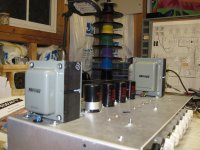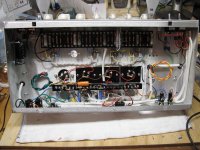- Build Rating
- 5.00 star(s)
This is my build of the Mojotone Custom 50 Amplifier Kit, a Hiwatt DR504 clone. I've had this built for a few months now. I've now logged several hours of practice on it, and also used it for one gig. All the parts, including the cabinet, were from Mojotone, I just did the assembly.
I'm super happy with everything about this, from the kit quality, to the build, to the final result. I've only built one other tube guitar amp, the Trinity Triwatt. The Trinity Triwatt is a Hiwatt "inspired" amp, but the Mojotone Custom 50 is intended to be an exact replica of the DR504.
If you've ever seen a picture of the wiring in a real vintage Hiwatt, they are a thing of beauty: they are famous for the "military spec" wiring, where every single lead is laid out with only straight runs and right angles, and cut perfectly to length. I think my Custom 50 lead dress is decent, but still not true vintage Hiwatt class. I really tried hard to take my time and make every wire run as neat as possible. I can at least say the wiring is better than in my Triwatt; that wiring is passable, but certainly not as neat as it could be. But I give myself a pass, since it was my first tube amp build, and also I was in a hurry to play it!
I'm running it through a Hi-Tone vertical 2x12 cabinet (which they make wide enough to accommodate the full width of the head). I used to have a DIY horizontal cabinet that I made about 20 years ago, long since sold. My carpentry skills are mediocre at best (seems I can never get perfectly square and fitted joints). So I'm perfectly happy to buy a commercial speaker cab. Also, Hi-Tone has some reproduction Fane speakers that are not available for individual purchase, they are only available when loaded in their cabs and combos.
I've never played a real Hiwatt, but I can't imagine they are too different than the Custom 50. To my knowledge, there's nothing particularly special about the components used, except perhaps the transformers. Internet hearsay suggests these Heyboer reproductions of the Patridge transformers used by vintage Hiwatt are about as good as you can get. Either way, I'm completely happy with the sound of this amp, it's a great big clean machine. The gig I played was an outdoor gig, and even then, the master volume stayed under 10:00 o'clock. I haven't had this amp up loud enough to get natural amp overdrive! That is the biggest difference compared to the Triwatt, the latter does break up much earlier. With the Triwatt, I can get noticeable preamp grind before the input volumes are maxed, and the power section will start breaking up around noon on the master volume.
That said, I'm not sure I'd be comfortable tackling the Custom 50 build if I hadn't done the Triwatt previously. The only documentation Mojotone provided was the schematic and layout diagram. And that is sufficient. But it would have intimidated me if I didn't have the Triwatt experience. In addition to schematic and layout diagram, the Triwatt also came with a fairly lengthy and detailed build guide; plus Trinity has their own forums, and lots of people have posted pics of their completed build, and I leaned on that a lot. The Mojotone kit packing and organization was unbelievably good; seriously, someone must have spent at least a couple hours getting it all ready for shipment.
My only complaint is that they didn't include the adjustable bias circuit. The originals did not have an adjustable bias, and that was Mojotone's goal, to exactly recreate the originals. My argument is that, when the originals were made, high-quality consistent tubes were readily available, which made a reasonable case for not needing to adjust the bias. But today's current-production tubes don't appear to be as consistent, so I think an adjustable bias is a hard requirement these days. Eventually, I plan to add the bias adjustment circuit, but that's a project for another day.
All in all, totally happy with the kit and build. It did take a long time to build, mostly because I forced myself to go super slow, and try to make everything as neat as possible. I'm tempted to build another one to turn into a combo, but that's probably a 30-40 hour commitment. I might cheat and just get a Ceriatone Hey-What without transformers, and install the Heyboers.
I'm super happy with everything about this, from the kit quality, to the build, to the final result. I've only built one other tube guitar amp, the Trinity Triwatt. The Trinity Triwatt is a Hiwatt "inspired" amp, but the Mojotone Custom 50 is intended to be an exact replica of the DR504.
If you've ever seen a picture of the wiring in a real vintage Hiwatt, they are a thing of beauty: they are famous for the "military spec" wiring, where every single lead is laid out with only straight runs and right angles, and cut perfectly to length. I think my Custom 50 lead dress is decent, but still not true vintage Hiwatt class. I really tried hard to take my time and make every wire run as neat as possible. I can at least say the wiring is better than in my Triwatt; that wiring is passable, but certainly not as neat as it could be. But I give myself a pass, since it was my first tube amp build, and also I was in a hurry to play it!
I'm running it through a Hi-Tone vertical 2x12 cabinet (which they make wide enough to accommodate the full width of the head). I used to have a DIY horizontal cabinet that I made about 20 years ago, long since sold. My carpentry skills are mediocre at best (seems I can never get perfectly square and fitted joints). So I'm perfectly happy to buy a commercial speaker cab. Also, Hi-Tone has some reproduction Fane speakers that are not available for individual purchase, they are only available when loaded in their cabs and combos.
I've never played a real Hiwatt, but I can't imagine they are too different than the Custom 50. To my knowledge, there's nothing particularly special about the components used, except perhaps the transformers. Internet hearsay suggests these Heyboer reproductions of the Patridge transformers used by vintage Hiwatt are about as good as you can get. Either way, I'm completely happy with the sound of this amp, it's a great big clean machine. The gig I played was an outdoor gig, and even then, the master volume stayed under 10:00 o'clock. I haven't had this amp up loud enough to get natural amp overdrive! That is the biggest difference compared to the Triwatt, the latter does break up much earlier. With the Triwatt, I can get noticeable preamp grind before the input volumes are maxed, and the power section will start breaking up around noon on the master volume.
That said, I'm not sure I'd be comfortable tackling the Custom 50 build if I hadn't done the Triwatt previously. The only documentation Mojotone provided was the schematic and layout diagram. And that is sufficient. But it would have intimidated me if I didn't have the Triwatt experience. In addition to schematic and layout diagram, the Triwatt also came with a fairly lengthy and detailed build guide; plus Trinity has their own forums, and lots of people have posted pics of their completed build, and I leaned on that a lot. The Mojotone kit packing and organization was unbelievably good; seriously, someone must have spent at least a couple hours getting it all ready for shipment.
My only complaint is that they didn't include the adjustable bias circuit. The originals did not have an adjustable bias, and that was Mojotone's goal, to exactly recreate the originals. My argument is that, when the originals were made, high-quality consistent tubes were readily available, which made a reasonable case for not needing to adjust the bias. But today's current-production tubes don't appear to be as consistent, so I think an adjustable bias is a hard requirement these days. Eventually, I plan to add the bias adjustment circuit, but that's a project for another day.
All in all, totally happy with the kit and build. It did take a long time to build, mostly because I forced myself to go super slow, and try to make everything as neat as possible. I'm tempted to build another one to turn into a combo, but that's probably a 30-40 hour commitment. I might cheat and just get a Ceriatone Hey-What without transformers, and install the Heyboers.
Attachments
-
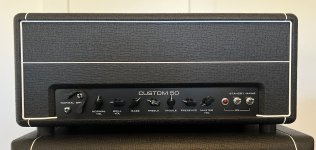 headshot.jpg507.1 KB · Views: 73
headshot.jpg507.1 KB · Views: 73 -
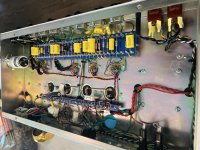 guts_overview_angle_4.jpg718.8 KB · Views: 71
guts_overview_angle_4.jpg718.8 KB · Views: 71 -
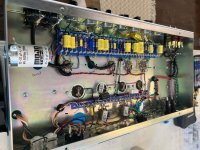 guts_overview_angle_3.jpg707 KB · Views: 64
guts_overview_angle_3.jpg707 KB · Views: 64 -
 guts_overview_angle_2.jpg430.9 KB · Views: 71
guts_overview_angle_2.jpg430.9 KB · Views: 71 -
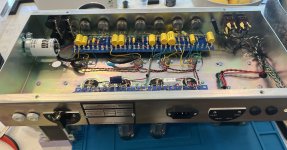 guts_overview_angle_1.jpg459.7 KB · Views: 73
guts_overview_angle_1.jpg459.7 KB · Views: 73 -
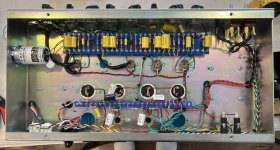 guts_overview.jpg579.9 KB · Views: 68
guts_overview.jpg579.9 KB · Views: 68 -
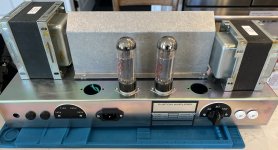 chassis_top_without_cab_3.jpg492.4 KB · Views: 58
chassis_top_without_cab_3.jpg492.4 KB · Views: 58 -
 chassis_top_without_cab_2.jpg425 KB · Views: 49
chassis_top_without_cab_2.jpg425 KB · Views: 49 -
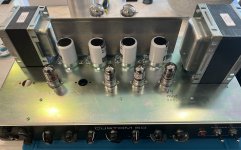 chassis_top_without_cab_1.jpg547.8 KB · Views: 54
chassis_top_without_cab_1.jpg547.8 KB · Views: 54 -
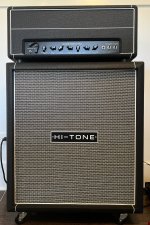 on_2x12v_speaker_cab.jpg922.8 KB · Views: 63
on_2x12v_speaker_cab.jpg922.8 KB · Views: 63



